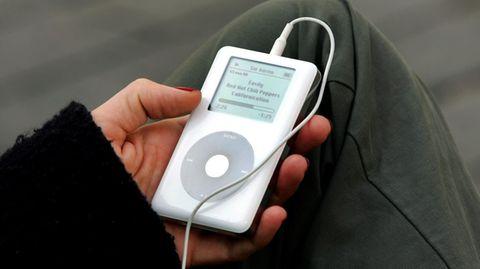
For years, the Moarsch law was a doom for Apple and his overfather Steve Jobs (1955-2011).It says that the complexity and performance of boards and storage technology doubles at regular intervals.Both at Apple's Macintosh (1984) and the IMAC (1998) this became doom for the company.Because with all the technical innovation that was in the devices: the development time sometimes lasted so long that the built -in hardware did not seem to justify the price for the devices relatively shortly after appearance.
Apple changed the market for portable music
So that had to be done, which Steve Jobs and Apple stood for since the late 1970s: real innovation.Apple came to Pass that hard drives were getting smaller around the turn of the millennium.Jon Rubinstein, who has accompanied jobs as an employee since 1990 and was decisive in the development of the IMAC, had the idea for iPod at the beginning of 2001 based on the first 1.8 inch hard disk worldwide.Only about six months later was on 23.October 2001 The presentation of the first iPod with five gigabyte storage space.
Jobs' presentation has a cult character today, since it comes from a different time.Although in his classic outfit of turtleneck sweaters and jeans, but in front of a comparatively tiny audience and with a power point presentation, which many students can do better these days, he presented the device revolutionary at that time.Up to 1.000 songs can be worn in your pocket in the future, without cassettes or CDs.In addition, there was the innovative user interface and the famous "Click Wheel", with which the owners can efficiently scroll through their music collection.

Apple's birth hour as a lifestyle product
The device was a complete success and is often referred to as the birth of today's Apple brand core.From then on, the group used the moor law to be used for its own advantage: just six months after the first iPod, a version updated on ten gigabytes of memory was already appeared.The storage capacity doubled again in mid -July 2002, and Apple also published its first headphones to integrate a remote control in the cable.
A few months later, Apple presented the third generation that was also overtaken in the design, the memory had grown again.In September 2003, Apple sold the mill teat.This was followed by various variants of the iPod, including the series "Mini", "Nano", "Shuffle", "Photo" and "Touch".The latter is the iPod, which is still available only today, it differs from a smartphone, thanks to the touch display, hardly noticeably different from a smartphone.The "Mini" version presented in 2004 was particularly successful: Presented in January, more than 100 went until mid-February.000 pre -orders at Apple.
Gigantic success at the right time - then the smartphones came
However, the actual peculiarity of the iPod was the iTunes previously introduced by Apple.If users of other manufacturers had to copy their MP3 files manually from one device to the other, iPod owners were able to easily synchronize their music collection between iMac, iBook and iPod.The subsequent success of the combination of iPod and iTunes was so great that in 2007 almost half of the Apple turnover was generated via the iPod - Apple sold 100 million iPods until April of the same year.
However, because Apple and jobs from the mistakes of the past apparently learned, it was clear that one could not rely on it.Once, in the early 1980s, the company was dependent on the sale of a single product: At that time it was one of the first mass-friendly personal computers, Apple II.So Jobs heralded a new era in the early 2007, in the middle of the greatest success of the iPod and presented the first iPhone.The rest is history, Apple has since increased to one of the most valuable corporations in the world.
MP3 player test: Click here for the MP3 player comparison.







